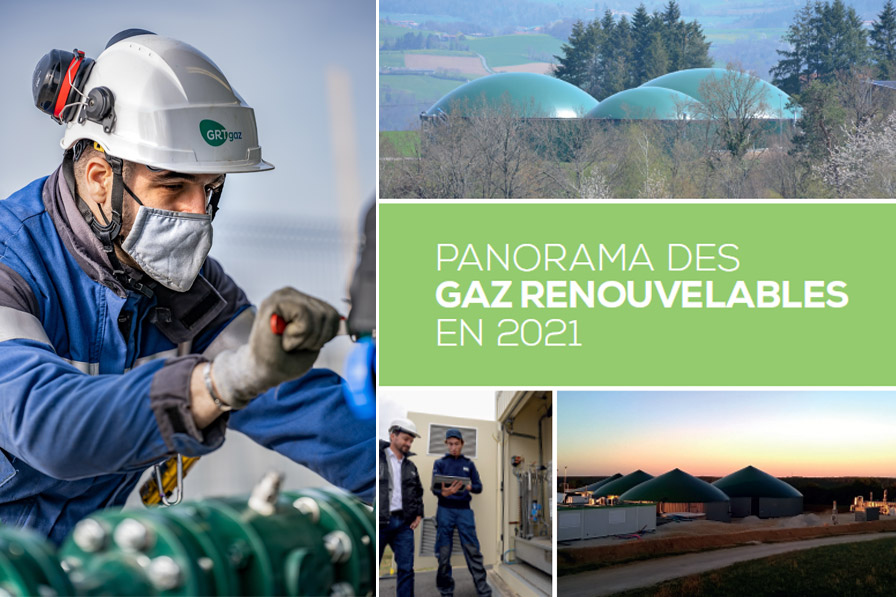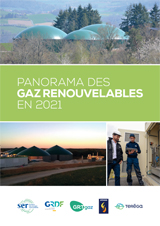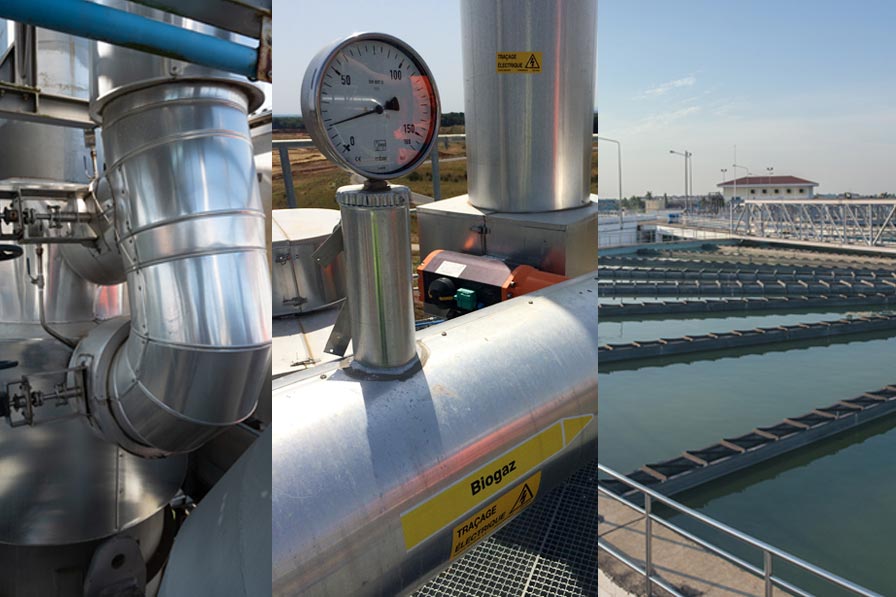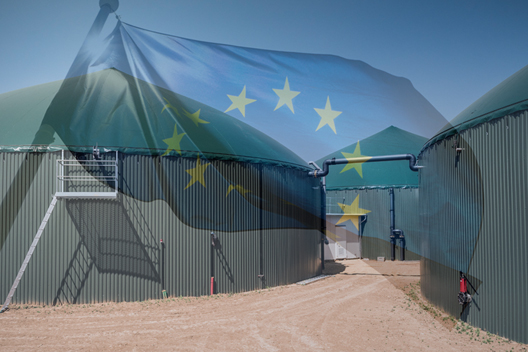Renewable Gas Panorama 2021

GRTgaz, le Syndicat des énergies renouvelables (SER), GRDF, SPEGNN and Teréga are working together to report on the booming renewable gas sector by publishing the Renewable Gas Panorama for the seventh year in a row.
Sustained momentum
The Panorama’s key takeaway is that the growth momentum typifying biomethane injection since 2015 is ongoing. In 2021, 151 new anaerobic digestion sites were commissioned in France, bringing the number of facilities connected to the French gas networks to 365 as at 31 December last year. The maximum annual injection capacity increased to 6.4 TWh at end-2021 versus 3.9 TWh a year previously. Renewable gas will be the only renewable energy to reach the 2023 targets set out in the French Multiannual Energy Programme (PPE) – and ahead of schedule.
An economic and regulatory framework to get behind
Renewable gas production has profited from several positive advances in 2021, driven by investment and the collaboration of all sector stakeholders (e.g. zoning progress that gives project owners increased clarity about plans for connecting their production units to the gas networks). Now more than ever, the implementation of new support mechanisms is needed for the sector to realise its full potential. The year 2022 should also see the publication of a Decree on biogas production certificates obliging suppliers to include a minimum percentage of renewable gas in their portfolios.
In the short and medium term, simple, economically viable measures will allow renewable gas to help combat the energy crisis. It would be enough to lift the production restrictions for existing facilities and to speed up the administrative authorities’ examination process for the most mature projects, so as to commission them ahead of time.
Ongoing safety improvements
Stepping up support for renewable gas seems even more crucial with the sector facing a pivotal moment in its history. The 2021 Panorama highlights ongoing improvements to professionalisation and safety, and the sector is committed to a quality approach that will ensure its successful transition to a large-scale operating model. Project owners and operators must be certain of the quality of their facilities’ design; oversee the operating conditions and ensure their suitability; and carry out rigorous monitoring and maintenance. Feedback from the field and several recent initiatives (the publication of a collection of agricultural best practices by the French National Institute for Industrial Environment and Risks; the rollout of the Qualimétha® label; the implementation of the Anaerobic Digestion Progress Agreement) all bolster its inclusion in a virtuous, sustainable development pathway.

Operators more galvanised that ever
Anaerobic digestion stakeholders are hence more galvanised than ever to consolidate the sector's boom and to make it a leading societal concern. Renewable gas is an integral part of the recovery plans for the French economy. The is an opportunity for France to achieve energy independence. It offers a response to climate challenges as well as multiple solutions and services for the regions. For this growth to take place, sector operators are playing their part in revising the French Energy and Climate Strategy (SFEC), with work being done to support an increasing number of projects and promote their acceptability.
New production pathways
While continuing to support anaerobic digestion, the sectors are taking steps to speed up the development of new production pathways.
The 2021 review shows that pyrogasification has reached sufficient technological maturity to envisage the construction of the first industrial facilities by 2023. In France, more than 15 commercial projects and demonstrators have given public notice of their desire to inject into the networks, following on from the pioneering platform in Gaya à Saint-Fons (69). Hydrothermal gasification – a technology for converting inputs with high moisture content – is also in a growth phase. The sector will take a major step forward in 2022 with SCE Systems' commissioning of Europe’s first industrial demonstrator project in Alkmaar, Netherlands – the largest in the world.
The increasing importance of hydrogen
The new Gas Panorama also highlights the increased importance of hydrogen. France has bold ambitions is this area, as demonstrated by the measures announced for the production and use of hydrogen under the France Recovery and France 2030 plans. While the Ordinance of February 2021 is a sign of significant progress, specific certification and traceability mechanisms are yet to be set out to trigger the expected momentum for this renewable energy. Nevertheless, initiatives are already on the rise. In June 2021, GRTgaz and Teréga launched an initial national market stakeholders’ consultation on the injection of decarbonised hydrogen produced from water electrolysis into the gas infrastructure. Results are promising, with 130 responses received. The MosaHYc cross-border project led by GRTgaz likewise provides a tangible example of the development of an industrial-scale pure hydrogen transmission network.
Publications

Pour aller plus loin

Renewable and low-carbon gases
